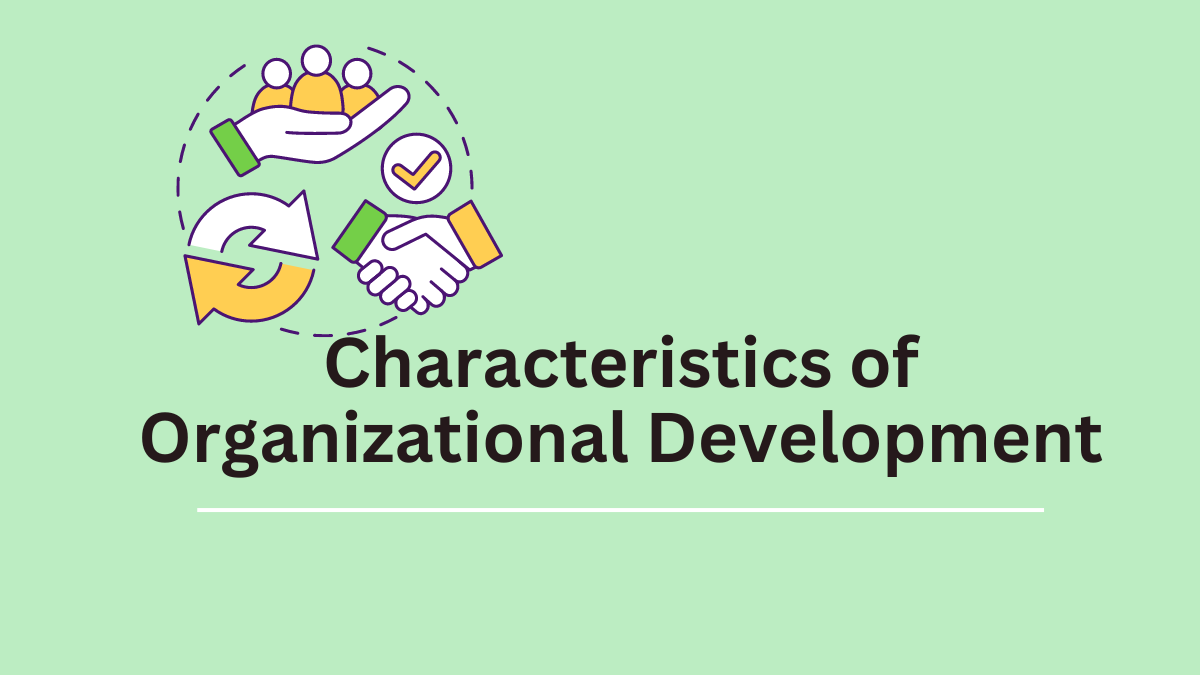Characteristics of Organizational Development
Organizational Development (OD) encompasses a set of principles and practices aimed at enhancing an organization’s performance and adaptability to change. Here are 12 key characteristics of organizational development (OD) that define its strategic approach:
Planned and Long-Term
Organizational Development is not a spontaneous or short-term fix. It involves a meticulous, data-driven planning process that spans the long-term existence of the organization. The intent is to create sustainable improvements by carefully designing interventions based on systematic analysis.
Problem-Oriented
The second characteristic of OD is that it is problem-oriented. At its core, OD is problem-solving in nature. It goes beyond theoretical discussions and addresses real, pressing issues within the organization.
The emphasis is on identifying challenges, researching their causes, and devising effective solutions to propel the organization forward.
Reflects a Systems Approach
Recognizing the intricate interconnections within an organization, OD takes a systemic perspective. It acknowledges that an organization functions as a complex system comprising various subsystems.
This systemic view enables a more holistic understanding, ensuring that changes consider the broader impacts on the entire organizational system.
Action-Oriented
Unlike theoretical approaches, OD is action-oriented. The focus is on achieving tangible results and accomplishments. It entails implementing planned interventions, monitoring progress, and taking corrective actions as necessary, ensuring that changes lead to measurable improvements.
Change Agents
OD requires individuals or entities, often external consultants, to act as change agents. These agents facilitate the change process, providing expertise and guidance. Their role involves steering the organization through the complexities of transformation without being constrained by internal hierarchies or politics.
Read More: What is Resistance To Change?
Learning Principles
Learning is fundamental to OD. It incorporates principles of re-education, emphasizing continuous learning and skill development. Employees are encouraged to identify, analyze, and solve real problems through a process of action research, fostering a culture of ongoing learning within the organization.
Performance
OD places a significant emphasis on performance improvement. Programs are designed to enhance organizational effectiveness by improving performance, whether it’s in terms of productivity, quality, or efficiency. The overarching goal is to mobilize the organization’s human resources effectively to achieve its objectives.
Humanistic
Rooted in humanistic values, OD places people at the center of the change process. It advocates for the fair and respectful treatment of employees, emphasizing dignity and transparency. A humanistic approach aims to create a supportive work environment that values collaboration, interpersonal relationships, and individual contributions.
Read More: What is Communication Flow?
Ongoing Interactive Process
The dynamic nature of OD is reflected in its ongoing, interactive process. It acknowledges that organizations, like their environments, are subject to continuous change. The interventions and strategies employed in OD are adaptable, allowing for adjustments in response to evolving circumstances.
Team Process
Prioritizing group dynamics over individual activities, OD places a strong emphasis on the team process. Through effective communication and collaboration among groups, strategies are developed to enhance interpersonal relationships and address functional conflicts. This team-oriented approach recognizes the significance of cohesive teamwork in achieving organizational goals.
Read More: What is Structural Change?
Feedback
Feedback is a cornerstone of OD. It involves gathering input from participants involved in the change decisions. This feedback loop serves as a crucial source of information, guiding the decision-making process. The belief is that informed decisions, guided by feedback, lead to more effective and successful change.
Dynamic in Nature
OD is inherently dynamic, adapting to changes in the external environment. Its primary goal is to align the organization with the evolving business landscape. This characteristic ensures that OD remains relevant and responsive to the shifting needs and challenges posed by the dynamic nature of the business environment.
In conclusion, these characteristics of organizational development collectively define its essence. By understanding and embodying these principles, organizations can leverage OD as a strategic tool to navigate change, foster growth, and enhance overall effectiveness.
Read Next: 7 types of organizational change

Sujan Chaudhary holds a Bachelor in Business Administration (BBA) degree and is currently pursuing an MBA degree. He loves to share his business knowledge with the rest of the world.
